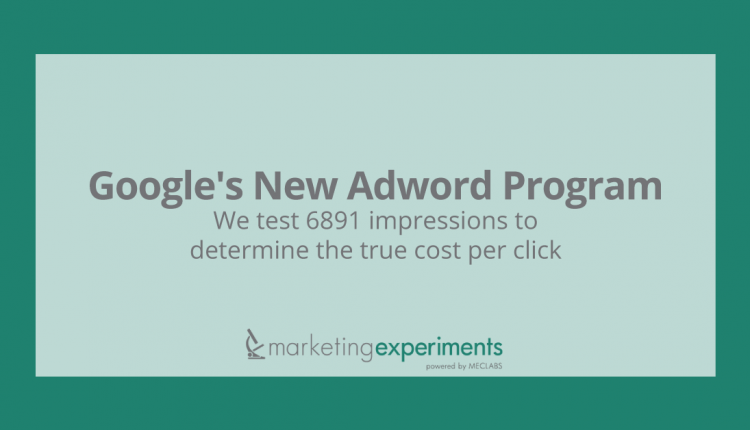Word Count: 2360+
Focus: 6 Questions
-
How effective is Google’s New Adword Program?
-
How can you calculate your true cost per click?
-
How can you predict, in advance, your number of impressions?
-
What is the most effective way to select your search terms?
-
How does Google’s new program compare with GoTo?
-
How can you achieve 4 times the industry click-through rate?
Credits:
-
Writer – Flint McGlaughlin
-
HTML Designer – Cliff Rainer

Yahoo! Stores – The Yahoo! Mall is perhaps the Net’s busiest shopping center. It receives an estimated 4 million unique visits per month and features groups Like Macy’s, Eddie Bauer, and Saks Fifth Avenue.
Small merchants can set up a new store for as little as $100 per month. But just how much of the popular mall’s traffic can the average store reasonably attract? Is outside promotion still necessary? Is it possible to generate a profit in your first 30 days? Does having a Yahoo! Store help you increase your search ranking on their main portal?
In the next report, we announce the results of a 3-month study of Yahoo! stores.
How did a belly dancing diva help our research team test an effective new advertising medium, achieve click-through ratios at 300 times the industry standard, and generate (eventually) qualified site traffic at $.22 cost per click?
While admittedly, our researchers were somewhat distracted by silky advertisements for hip scarves, they did manage to discover some useful data.
Here is a brief synopsis of our findings:
Test Summary
We worked with a popular dance portal to test Google’s new Adword program. We tested six different sets of key words, and generated 6891 impressions.
Test Product
We were seeking visits to a middle eastern dance portal.
Test Costs
The budget was $2000, we have, thus far, invested just 10%.
Over the next 60 days we will invest the balance in secondary experiments with Google and GoTo.
Test Methodology
We measured responses through the Google ad tracking software interface. We corroborated measurements through our traffic analysis program.
Test Definitions
-
Impression – a term used to indicate that a viewer has clicked on a page containing your ad (laymen’s definition).
-
CPM – It is the symbol for “cost per mill” (thousand). It is used to calculate what an advertiser pays for every one thousand people who are exposed to his/her message.
Test Results
Here are the results we achieved after 14 days:
-
Impressions generated for first key word set = 6662
-
Click-through ratio for first key word set = 1.29%
-
Impressions generated for second key word set = 203
-
Click-through ratio for second key word set = 7%
OK marketing pro, test your savvy. Which copy do you think scored the highest click-through ratio?
Hip Scarves Here
Choose from 17 new styles and 14
different colors. Win a costume.
(or)
Discover Belly Dance
Over 5000 events listed here. Win
a free costume. Meet famous dancers.
Titillating ads, the both of them, but which one do you think is more appealing to the experienced or ‘would be’ dancer? Perhaps you need more data?
The key words for the first ad were:
> belly dancing costumes
> belly dance costumes
The key words for the second ad were:
> belly dancers
> belly dancer
> belly dancing
> belly dance
So what is your professional “guess”?
While ad number two, had (by far) the most popular search term, ad number one achieved a 500% higher click-through ratio — And in the dreary world of marketing analysis, this is what passes for a “profound” difference. Men with many and assorted initials after their surname call it “statistically significant”.
If by chance, you chose the correct answer, we can draw one of three inferences:
-
You are a marketing genius.
-
You are statistically fortunate.
-
You have an aptitude for belly dancing.
For purposes of this report, we will assume the second point. Which raises the critical question:
Why did ad number one perform so much better than ad number two?
To answer that question, we need to budget a few words for explaining the Adword system.
How does the Google Adword Program work?
-
Google is a unique search engine that relies heavily on link popularity to rank the pages it has indexed.
-
Google now offers a service that allows you to place a small text ad next to the results of a search term. (1)
-
The ad is very small, but very prominent. You are limited to 25 Characters for the headline, and just 35 characters each, for two description lines.
-
The cost ranges between $8 and $15 per thousand impressions, and is dependant upon how high your ad is placed on the page.
-
The placement of your ad is dependant upon how many click-throughs it receives – the more clicks, the higher the ad.
-
You pay for the ad with a credit card and there is NO minimum charge. This allows you to carefully test the program before committing your resources.
With this background information to serve as context, we can ask again: why did the first ad outperform the second? After all, the headline “Hip Scarves Here” did NOT even contain the search term “belly dancing costumes”.
What was the difference?
The answer can best be explained by studying the psychology of the search process. It is difficult for us to predict EXACTLY what the consumer is looking for when they search the term “belly dance”.
Are they looking for events, products, dancers, historical information, or entertainment?
When the consumer submits the term “belly dance costumes”, however, we can reasonably assume that they are looking for clothing worn by belly dancers.
The point is simple: specificity helps us to create an offer that is more relevant. And relevancy is a key to success with the pay search engines. Which brings us to another question…
Section 2 (Continue…)



